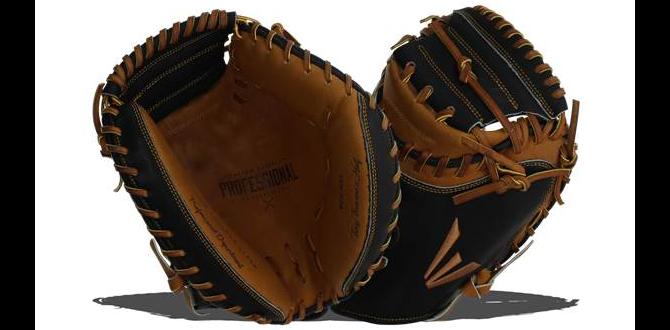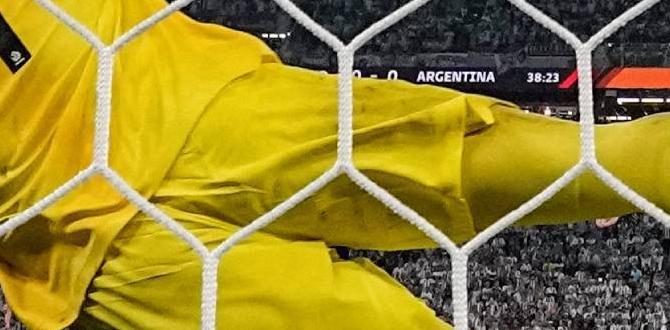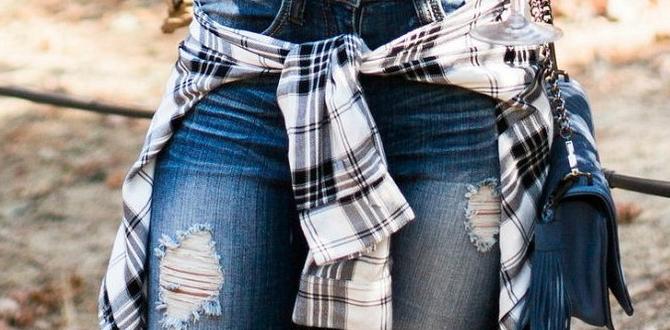Getting the right fit for your Force3 Catcher’s Knee Savers is crucial for comfort, performance, and injury prevention. This guide will walk you through how to measure and select the perfect size, ensuring you can focus on the game, not your gear.
Catching can be tough on your knees. Whether you’re a young player just starting out or a seasoned veteran, protecting your joints is super important. Sometimes, even the best gear needs a little attention to fit just right, and that’s where catcher’s knee savers come in. If you’ve got Force3 Catcher’s Knee Savers or are thinking about getting them, you know they’re designed to offer awesome protection. But what if they’re not fitting quite right? It can be frustrating, leading to discomfort or even gear that doesn’t work as well as it should. Don’t worry, though! Finding the perfect fit is simpler than you think. We’ll break down exactly how to measure and ensure your Force3 Knee Savers keep you comfortable and safe behind the plate. Get ready to discover how easy it is to get that essential, “locked-in” feel so you can play your best.
Why the Right Fit for Your Force3 Knee Savers Matters
Think of your catcher’s knee savers like a glove – they need to fit snugly but comfortably to do their job effectively. When your Force3 Knee Savers are sized correctly, they offer a direct pathway to better performance and improved safety. A well-fitting knee saver means the protective padding stays exactly where it needs to be, absorbing impact and reducing the stress on your knees with every squat and block. If they’re too loose, they might shift around, leaving gaps where vulnerable joints can be exposed or causing chafing and irritation. On the flip side, if they’re too tight, they can restrict movement, lead to discomfort, and even affect circulation. For developing young players, proper fit is especially critical, as it supports healthy growth and establishes good equipment habits early on.
Force3’s commitment to innovation in catcher’s gear is all about maximizing protection without compromising mobility. Their Knee Savers are designed with advanced technology to help absorb shock and distribute force, but this technology can only work its best when the gear is fitted to your unique anatomy. Investing a few extra minutes to get the sizing right will pay off immensely during long games and intense practices. It means less distraction from uncomfortable gear and more focus on making those crucial plays, framing pitches, and being the rock behind home plate.
Understanding Force3 Catcher’s Knee Savers
Force3 has carved out a strong reputation in the baseball world for developing gear that prioritizes player safety and performance. Their focus often lies in creating equipment that addresses the unique stresses catcher’s face. The Force3 Catcher’s Knee Savers are a prime example of this, engineered with specific materials and designs aimed at providing superior protection and comfort. Unlike basic padding, these knee savers often incorporate advanced shock-absorption technologies, much like the impact-mitigating systems found in high-end athletic footwear. Force3’s dedication to research and development means their gear is built to withstand the rigors of the game and protect athletes.
These knee savers are designed to integrate seamlessly with your catcher’s leg guards, acting as a crucial layer of defense between your knees and the hard ground. The goal is to reduce the jarring impact that can lead to long-term injuries. Knowing how they are constructed and what they aim to achieve helps in understanding why a precise fit is so important. They are not just add-ons; they are integral components of a comprehensive protective system. Understanding the engineering behind them underscores the need for proper sizing to unlock their full protective potential.
Step-by-Step Guide to Sizing Your Force3 Knee Savers
Getting the perfect fit for your Force3 Catcher’s Knee Savers is straightforward. It mainly involves taking a couple of key measurements. Follow these simple steps to ensure you choose the right size:
Step 1: Gather Your Tools
Before you start, make sure you have the following:
- A flexible measuring tape (the kind you might use for sewing is ideal).
- A helper (optional, but can make measuring easier).
- A pen and paper to record your measurements.
- Your Force3 Catcher’s Knee Savers (if you already have them for comparison).
Step 2: Measure Your Thigh Circumference
This is the most critical measurement for sizing. You’ll want to measure the circumference of your thigh where the top of the knee saver typically rests. This is usually about 4 to 6 inches above the center of your kneecap.
- Stand with your leg straight but relaxed.
- Find the spot on your thigh that will be the highest point of your knee saver when worn. This is typically about 4-6 inches above the middle of your kneecap. For most adult catchers, this is generally around the middle of the thigh, but your body shape might vary.
- Wrap the flexible measuring tape snugly, but not too tight, around your thigh at this marked point. Ensure the tape is level all the way around.
- Read the measurement where the tape overlaps. Note this measurement down carefully in inches or centimeters. It’s helpful to measure a few times to ensure accuracy.
Step 3: Measure Your Calf Circumference
This measurement helps ensure the knee saver will stay put and not slide down. You’ll measure the widest part of your calf.
- Locate the widest point around your calf muscle.
- Wrap the flexible measuring tape around this widest part of your calf. Keep the tape snug but not uncomfortably tight, and ensure it’s parallel to the ground.
- Read the measurement where the tape overlaps. Record this number.
Step 4: Consult the Force3 Sizing Chart
Once you have your thigh and calf measurements, compare them to the official Force3 Catcher’s Knee Savers sizing chart. These charts are usually available on the Force3 website or on retail product pages. Referencing the chart is the most reliable way to determine the correct size.
Here’s a hypothetical example of what a sizing chart might look like. Always refer to the official chart provided by Force3 for the most accurate information:
| Size | Thigh Circumference (Inches) | Calf Circumference (Inches) |
|---|---|---|
| Small | 16″ – 18″ | 12″ – 14″ |
| Medium | 18″ – 20″ | 14″ – 16″ |
| Large | 20″ – 22″ | 16″ – 18″ |
| X-Large | 22″ – 24″ | 18″ – 20″ |
Example Usage: If your thigh measurement is 19.5 inches and your calf measurement is 15 inches, according to this sample chart, you would likely fit best into a Medium size.
Step 5: Check the Fit When Trying Them On
If you’ve purchased your knee savers and are trying them on:
- Put on your catcher’s pants (or athletic pants).
- Slide the knee savers on. They should fit snugly around your thigh and calf.
- The top of the knee saver should sit comfortably high on your thigh, providing coverage.
- The padding should align with your kneecap and surrounding areas.
- Move around: Squat down, bend your knees, and simulate game actions. The knee savers should stay in place without restricting your movement or causing immediate discomfort.
- Pay attention to any pinching, slipping, or excessive tightness.
Tips for Ensuring the Best Fit
Beyond the basic measurements, a few extra tips can help you dial in the perfect fit for your Force3 Catcher’s Knee Savers:
- Measure Over Your Gear (If applicable): If you plan to wear your knee savers over thick sock liners or thin compression sleeves, include those in your thigh and calf measurements to get a more accurate sense of the circumference. However, for most knee savers, measuring directly on the skin is standard, and they are designed to fit with standard athletic socks.
- Consider Your Leg Shape: Everyone’s legs are shaped differently. Some people have more muscular thighs or calves. If you fall between sizes, it’s often a good idea to go with the larger size if you’re concerned about restriction, or the smaller size if you’re worried about slippage. However, always try to stick as closely to the chart as possible first.
- The “Snugness” Test: The ideal fit is snug, like a firm handshake. It should feel secure and supportive, not constricting. You should be able to take a deep breath without feeling like your circulation is being cut off, but also not feel any significant looseness.
- Check for Gaps: When the knee saver is on, look closely to see if there are any noticeable gaps between your leg and the padding, especially around the sides of your knee and patella. A good fit minimizes these gaps.
- Break-in Period: Like many pieces of baseball equipment, some knee savers might feel a little stiff upon first use. However, they shouldn’t feel painful. If there’s significant discomfort or pinching that doesn’t improve after a short break-in period (e.g., an hour of wear), the size might be incorrect.
Common Sizing Issues and How to Solve Them
Even with careful measuring, sometimes issues pop up. Here’s how to troubleshoot:
Issue: Knee Savers Feel Too Tight
Solution: If your Force3 Knee Savers feel uncomfortably tight, restricting movement, or causing numbness, they are likely too small. Check your measurements against the sizing chart again. If you are indeed between sizes, try the next size up. For immediate relief, adjust how you are wearing them – ensure straps aren’t overtightened, and try them on with different socks. However, the best solution is usually to exchange them for a larger size.
Issue: Knee Savers Feel Too Loose and Slide Down
Solution: If your knee savers are constantly sliding down your leg, they are probably too large. This can be a major distraction and compromise protection. Re-measure your thigh and calf circumference to confirm. You might need to shrink them slightly if they are fabric-based and washable (check manufacturer instructions), but more often than not, a size down is required. Ensure the straps are properly secured, but if they are maxed out and still loose, a smaller size is the answer.
Issue: The Padding Doesn’t Align Correctly
Solution: If the protective padding doesn’t seem to cover your kneecap or the surrounding vulnerable areas effectively, it’s a fit issue. This is often linked to the thigh measurement being off, or the overall size being too large or too small. The knee saver needs to sit high enough on the thigh to provide full coverage. Adjusting the positioning by pulling them up or down might help temporarily, but a correct-sized unit will naturally align properly.
Issue: Chafing or Irritation
Solution: While some initial break-in might cause mild irritation, persistent chafing and irritation usually indicate a poor fit. It can mean the material is rubbing in the wrong places due to looseness, or the seams are causing friction because of tightness. Ensure you’re wearing appropriate socks. If the problem persists, re-evaluate your size. Sometimes, a thinner pair of moisture-wicking socks can also help prevent irritation. Consider using athletic tape on sensitive spots during the break-in period if you suspect it’s minor.
The Technology Behind Force3 Protection
Force3 isn’t just about pads; it’s about smart design. Their equipment often utilizes proprietary technologies to achieve superior protection. For their knee savers, this can include advanced foam composites or integrated shock absorption systems that work to dissipate impact energy across a larger surface area. You can learn more about the science behind their protective gear on resources dedicated to athletic injury prevention, such as those provided by organizations like the National Sports Safety Institute, which often highlight the importance of well-designed protective equipment in mitigating common sports-related injuries.
The core principle is to move away from simply providing a cushion to actively managing the force of impact. When you’re behind the plate, absorbing foul tips or diving for a ball, your knees bear a significant load. Force3’s approach aims to reduce this load, potentially lowering the risk of chronic issues like arthritis or acute injuries like sprains and fractures. The materials and construction are engineered to perform consistently, game after game, practice after practice.
Caring for Your Force3 Knee Savers
To ensure your Force3 Catcher’s Knee Savers last and continue to provide optimal protection, proper care is essential. Always follow the manufacturer’s specific care instructions, which are usually found on the product tag or the Force3 website.
- Cleaning: Most knee savers can be cleaned with mild soap and cool water. Gently scrub them with a soft brush or cloth, then rinse thoroughly. Avoid harsh chemicals or abrasive cleaners, which can degrade the materials.
- Drying: Air dry your knee savers completely after cleaning. Do not put them in a clothes dryer or expose them to direct heat sources, as this can warp or damage the protective components. Stuffing them with newspaper can help absorb moisture and speed up drying.
- Storage: Store your knee savers in a cool, dry place away from direct sunlight. Avoid cramming them into tight spaces where they could get crushed or deformed. Keeping them in a gear bag is standard, but ensure they aren’t bent at extreme angles for prolonged periods.
- Inspection: Regularly inspect your knee savers for any signs of wear and tear, such as cracks in the padding, torn straps, or loose stitching. If you notice significant damage, it might be time to consider replacing them to maintain effective protection.
Frequently Asked Questions About Force3 Catcher’s Knee Savers Sizing
Q1: How do I know if my Force3 Knee Savers are the right size?
A1: The right size will feel snug and secure without being too tight or too loose. They should stay in place when you move, and the padding should align correctly with your knee. There shouldn’t be any significant discomfort or restriction of movement from the fit itself.
Q2: Can I measure my leg with my catcher’s pants on?
A2: It’s best to measure directly on your skin with athletic socks on for consistency. If you intend to wear a specific liner or thick socks that you believe will consistently be part of our base layer for catching, you could consider measuring over them, but standard sock measurement is most common.
Q3: What if I’m between sizes on the Force3 sizing chart?
A3: If you’re between sizes, consider your personal preference. If you prioritize a secure, locked-in feel and don’t mind a slightly snugger fit, consider the smaller size. If you prefer more room for movement or are concerned about restriction, the larger size might be better. Many find going up a size offers more flexibility but can sometimes lead to slippage if it’s too large.
Q4: How tight should the straps be?
A4: The straps should be snug enough to keep the knee saver in place but not so tight that they cut off circulation or cause discomfort. Think of them as securing the fit comfortably, not as tourniquets.
Q5: My knee savers keep slipping down, even though I think I got the right size. What should I do?
A5: This usually means they are too large, or your leg shape doesn’t conform perfectly to the standard sizing. First, ensure the straps are adjusted correctly and as tight as they can comfortably go. If they still slip, re-measure carefully. You might need a size down. Sometimes, certain materials on pants can cause slippage; a base layer like compression shorts might offer a bit more grip.
Q6: How important is the calf measurement compared to the thigh measurement?
A6: Both are important! The thigh measurement is primary for ensuring the main part of the knee saver sits correctly and comfortably on your leg. The calf measurement helps ensure the lower part of the knee saver (if applicable, or the overall leg curvature) fits well and provides a secure anchor so the entire unit doesn’t slide down.
Conclusion
Finding the correct size for your Force3 Catcher’s Knee Savers is a crucial step in ensuring maximum comfort, protection, and performance behind the plate. By carefully measuring your thigh and calf circumference and comparing it to the official Force3 sizing guide, you can confidently select the best fit. Remember, a well-fitting knee saver stays in place, aligns properly with your kneecap, and allows for unrestricted movement. Don’t underestimate the impact of proper gear fit – it directly contributes to your ability to play at your best and stay healthy throughout the season. A little




